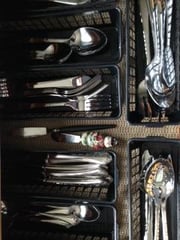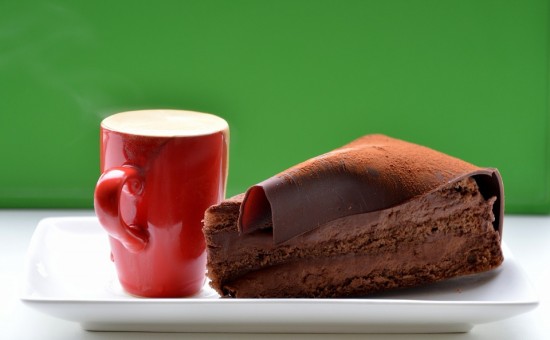When I started writing these posts, I had three junk drawers. In one room.
In my defense, they weren't actually the traditional junk drawer with a hodgepodge of things from stray receipts to nail files to thumbtacks. Each drawer contained specific sorts of things, but the drawers themselves were a mess, separately and collectively. More junky drawers than junk drawers, they were clutter catchers, and, in the state they were in, they were a waste of prime real estate. The sad thing was that they'd been this way for years. I'd fallen into the habit of putting certain things in certain places, and I only realized how little sense it made when I needed space for a new crock pot and had to re-assess my available storage space.
No matter what room or piece of furniture they reside in, drawers are a blessing and a curse. Like closets, they are open, rectangular spaces, and as such, they make it far too easy to drop and run, cram and jam or stash our stuff "somewhere" -- and then close them and hide the evidence.
Regardless of our personal and organizational styles, large, rectangular spaces work best when we can see what's in them, which is one reason professional organizers frown on junk drawers -- singular or plural. Fortunately, there's one simple strategy that can make a difference. Like Give it Five! and Don't put it down, put it away! this idea can be personalized to fit your life and styles:
Divide and conquer.
Admittedly, I have an I need to see it bias, but I think the drawer organizer might be the best thing ever created. Okay, when you factor in caffeine and chocolate, it might only make the top ten, but my point is that simply subdividing the space inside that drawer so that you can see what you have makes the whole space work better.
Consider the flatware drawer in your kitchen -- forks, knives and spoons all neatly cocooned in their own little subdivisions. If we don't give a second thought to putting our flatware away that way, it's not such a leap to organizing our other rectangular spaces in a similar fashion.
 Copyright 2016 Lisa Hess. All rights reserved.
Copyright 2016 Lisa Hess. All rights reserved.
Take my recently rehabilitated junky drawers. I have everyday flatware and nicer stuff. The everyday knives, spoons and forks live in the kitchen drawer described above. The nicer ones (now) have a home in a dining room drawer that wasn't subdivided. I lined the drawer with shelf liner and added narrow plastic bins from the dollar store. The drawer looked so good after I was finished that I periodically opened it up when I walked by just to enjoy how organized it was.
The drawers in my bathroom are similarly divided with plastic (i.e. wipeable) bins of various depths and sizes so that when I open the drawer, I can not only see what I have, but I know where it goes when I'm finished with it, making it more likely that I'll put it not only away, but where it belongs.
While subdivision isn't necessary for every drawer, cupboard or closet in the house, it's a great way to keep catch-all rectangular spaces organized. In one of my junky drawers, I had the right idea, but I hadn't carried it out fully enough. I had a bin for collecting receipts and another with candles in it, but the rest of the drawer was a free-for-all. Mistake. That was an invitation to junkiness. So, I cleared it out, relined it (nicer spaces stay organized longer) and found bins that filled and subdivided the space....much better.
There's no need to spend a lot of money to do this. Bins from discount stores can work as well as expensive alternatives, and you can also use gift boxes, shoe boxes and cardboard dividers. Think back to the containers that work for you and determine how you can adapt them to subdividing your large, rectangular spaces.
- As an I need to see it person, I'm partial to unlidded containers that I can color code, label or see through.
- Subdividing helps I love stuff people to organize collections and keeps supplies for the I love to be busy person's many activities easily separated and accessible.
- When the rectangular space is subdivided I can (literally) drop and run and my I know I put it somewhere husband has a better chance at remembering which "somewhere" he put something in.
- As with other containers, size will be essential for cram and jammers -- too big and the visual is gone, too small and, well, just forget it. It'll never happen.
So, the next time you decide to clean out a junk drawer, arrive armed (with containers, and maybe even some shelf liner) and ready to do battle.
And when you're finished, maybe even celebrate with a little coffee and chocolate.
Copyright 2016 Lisa Hess
About the Author

Lisa Hess
Transplanted Jersey girl Lisa Lawmaster Hess is the author of a blog compilation, three novels, and three non-fiction books, including the award-winning Know Thyself: The Imperfectionist’s Guide to Sorting Your Stuff. A retired elementary school counselor, Lisa is an adjunct professor of psychology at York College of Pennsylvania. She blogs at The Porch Swing Chronicles, Organizing by STYLE, and here at Catholicmom.com. Read all articles by Lisa Hess.



.png?width=1806&height=731&name=CatholicMom_hcfm_logo1_pos_871c_2728c%20(002).png)
Comments